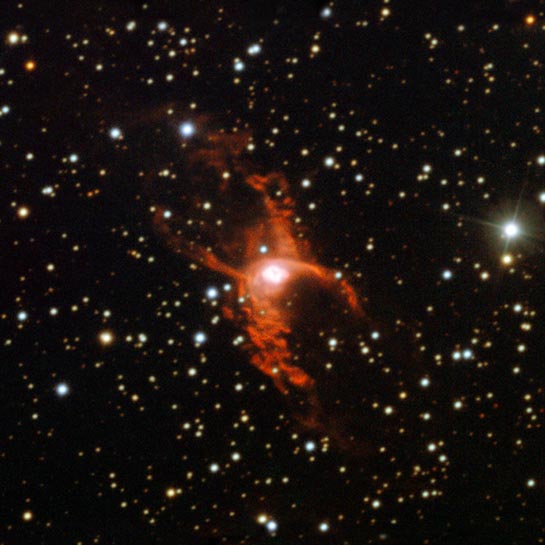
Planetary nebula
RA 18h 5m 13.12s Dec -19° 50' 34.68"
Sagittarius
12
0.17 arcmin
3.39 x 3.16 arcminutes
North is 0.3° right of vertical
ESO
September 4, 2013
Other images: N9738 N0109 N1338
ABOUT
THIS IMAGE:
This image shows an example of a bipolar planetary nebula known as NGC 6537 taken with the New Technology Telescope at ESO's La Silla Observatory. The object was discovered on July 15, 1882 by Edward Pickering. The shape, reminiscent of a butterfly or an hourglass, was formed as a Sun-like star approached the end of its life and puffed its outer layers into the surrounding space. For bipolar nebulae, this material is funneled towards the poles of the ageing star, creating the distinctive double-lobed structure.
Observations using the NTT and Hubble have found that bipolar planetary nebulae located towards the central bulge of our Milky Way appear to be strangely aligned in the sky - a surprising result given their varied and chaotic formation.
NGC
6537, which lies much closer to the Earth, was not part of the new study.